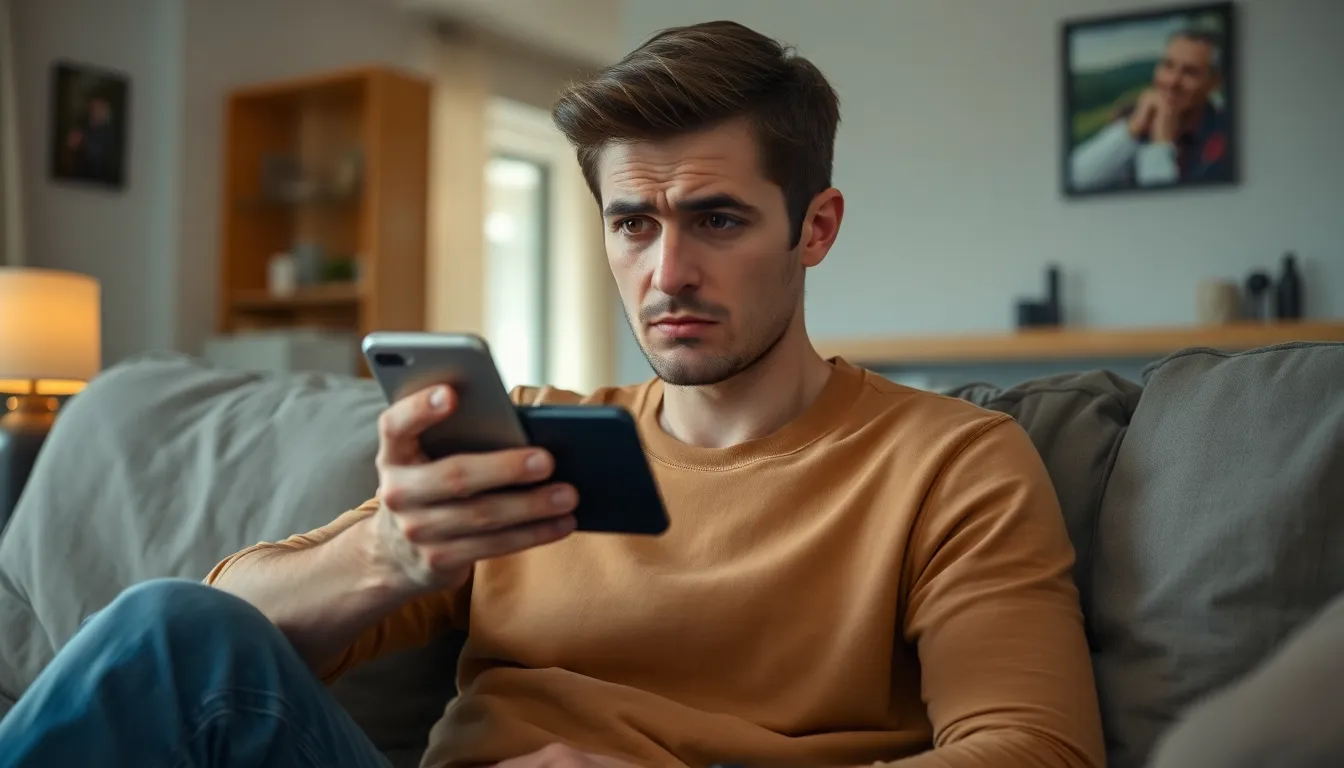Table of Contents
ToggleEver felt that sinking feeling when you realize someone’s blocked you on their iPhone? It’s like being suddenly kicked out of a party you didn’t even know you were invited to. While it might sting a bit, understanding the signs can help you navigate this digital minefield with grace—or at least a good laugh.
Understanding Blocking on iPhone
Blocking on iPhone allows users to limit communication from specific contacts. Recognizing the implications of being blocked can provide clarity and enhance emotional resilience.
What Does Blocking Mean?
Blocking means preventing someone from contacting you via calls or texts. When a person blocks another, they no longer receive messages or calls from that number. Individuals cannot see the blocker’s online status or profile updates. Blocked contacts might assume their messages are ignored. Understanding this can roll back assumptions and reduce emotional distress.
How Blocking Works on iPhone
Blocking on iPhone is straightforward. Users can access contacts and select the specific person they want to block. In the Phone app, one taps the “i” icon next to a contact and chooses “Block this Caller.” Once blocked, calls go directly to voicemail without notifications. This process also applies to FaceTime calls and messages through iMessage. Notifications for any attempted communication from blocked numbers won’t appear, creating a complete barrier.
Signs You Might Be Blocked

Recognizing the signs of being blocked on an iPhone can help individuals understand their communication status. Several indicators may signify a blocked contact.
Inconsistent Message Delivery
Messages sent to a blocked number won’t deliver as expected. Delivery receipts won’t appear, creating doubt about message transmission. Some may experience regular failures in message delivery without further explanation. Messages may display a single gray checkmark instead of the usual two. This inconsistency can lead to confusion and concern about the recipient’s engagement. Increased delays in sending messages or outright failures could indicate blocking.
Changes in Call Behavior
Blocked numbers typically experience changes in call handling. Calls may go straight to voicemail, suggesting the recipient may not want to communicate. Numerous attempts to call sans response can indicate potential blocking. The phone may ring once or not at all before redirecting to voicemail. Observing a pattern of call behavior over time can provide definitive clues to calling restrictions. An ongoing inability to connect may signify that the recipient chose to block communications.
Confirming if You’re Blocked
Recognizing whether someone has blocked you can sometimes prove challenging. Certain indicators can provide clarity about your communication status.
Checking Message Status
Messages sent to a blocked number often show a single gray checkmark instead of the typical two. Delivery receipts may not appear, further indicating potential blocking. If a pattern of no responses develops with this messaging behavior, it raises doubts about the recipient’s engagement. Messages might not even reach the person on the other side. Understanding these signs helps gauge the situation effectively.
Using Alternate Communication Methods
Exploring different communication methods can also shed light on whether you’re blocked. Trying to reach out via social media or email might offer additional insight. If your attempts to contact someone result in no response across multiple platforms, that suggests a possibility of being blocked. Observing the recipient’s online status or activity in those channels can further clarify your standing. Different communication routes often provide a more complete picture.
What to Do if You’re Blocked
Navigating the emotions of being blocked can be challenging. Understanding the situation and respecting boundaries proves essential.
Evaluate the Situation
First, assess communication patterns. Look for signs such as undelivered messages or calls going directly to voicemail. Identify recurring instances where interactions failed. Analyze whether these patterns align with recent exchanges or escalating conflicts. Considering the impact of past interactions helps, as unresolved issues may influence the current status. Reflecting on these elements facilitates a better understanding of the reasons behind the possible blocking. Acknowledging personal feelings can guide future steps.
Respect Their Privacy
Honoring privacy is crucial. Remember that individuals reserve the right to manage their communication preferences. Trying to bypass a block through alternative methods may come off as intrusive. Give them space to deal with personal matters. Reaching out through social media or mutual friends can blur boundaries. Respecting their decision enhances emotional resilience and allows for personal growth. By keeping a respectful distance, it fosters a healthier dynamic, whether continuing relationships or moving on.
Experiencing being blocked on an iPhone can be disheartening but it’s essential to approach the situation with understanding. Recognizing the signs and respecting the other person’s boundaries can lead to healthier interactions. Instead of dwelling on feelings of exclusion, individuals can focus on personal growth and emotional resilience.
Navigating these emotions requires self-reflection and a willingness to move forward. Whether it’s reevaluating past communications or embracing new connections, honoring one’s own feelings and the choices of others can pave the way for better relationships in the future. Ultimately, it’s about fostering respect and understanding in all forms of communication.




